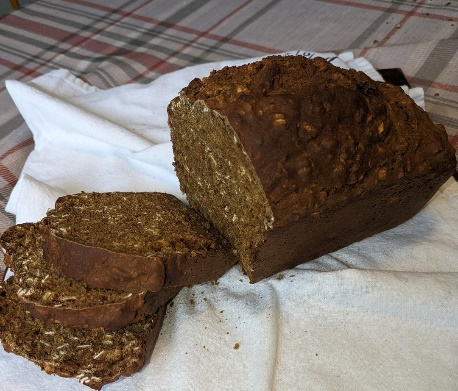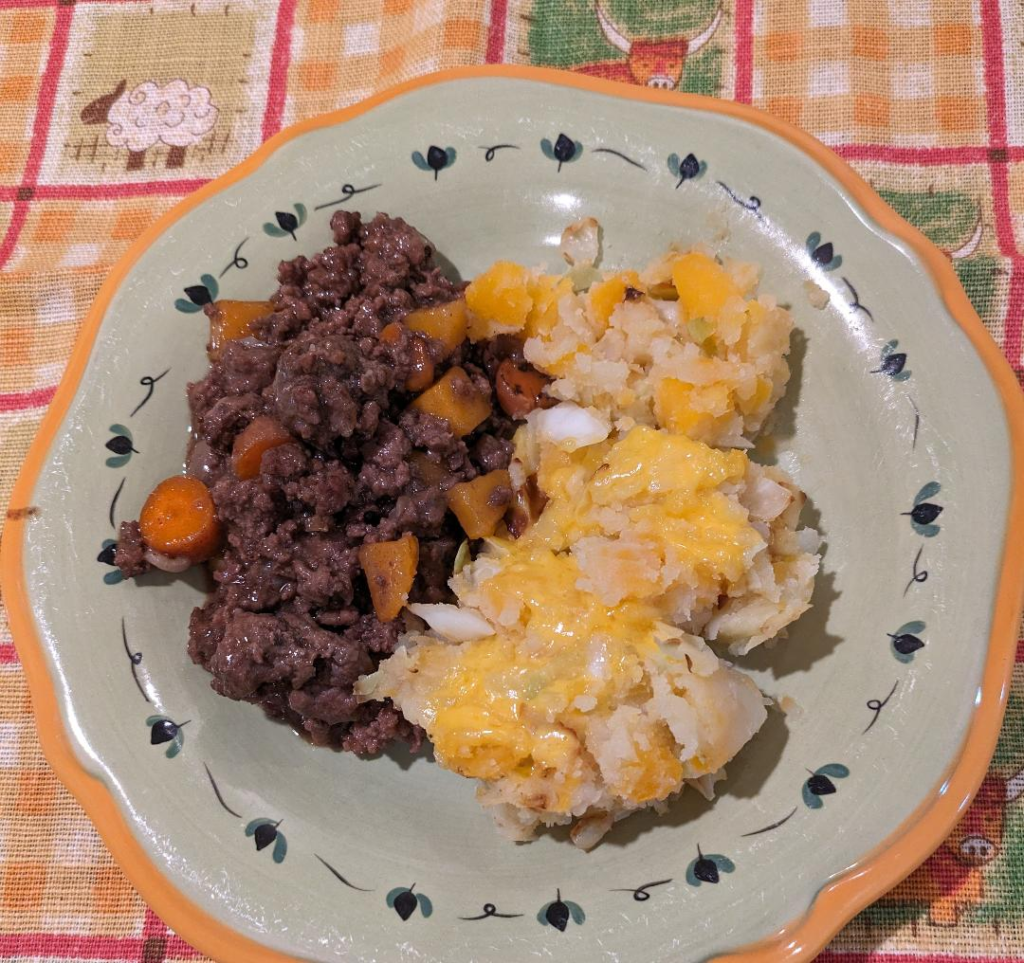By Carolyn McDonald Graf
Scotland is an island nation made up of large and small bits of land surrounded by water. The western most of these are the Outer Hebrides. On the northwestern part of Scotland, this chain of islands contains more of the remaining crofting villages than any of the other crofting counties. The crofting system is an ancient one of hereditary tenure of small patches of cultivated lands, combined with the rights of common grazing on the hills and mountains. These villages were totally self-sufficient, raising cattle, sheep, poultry, goats, and hens.
During the winter months, the animals were fed whatever could be found around the croft. During the summer, the animals would be taken to the mountains to the shieling, a small hut where the family would live while the animals grazed on the pastures. The small patches of land were then used to grow potatoes, turnips, barley, or other vegetables. The cattle, goats, and sheep provided milk for butter and cheese. The cattle were bartered for other goods and grains while the wool from the sheep was spun and woven into clothing. Fishing was also an important part of their livelihood. Peat was the main source of fuel in this mainly treeless area.
The diet of these independent people included many types of fish, seaweed, and shell fish and most cooking was done in a large pot hung in the middle of the room over the peat fire. A frying pan, or girdle, was used for baking and also hung over the fire. Their diet also included seabirds and their eggs. On the island of St. Kilda, Solan Goose–or gannet–was a main staple and the islanders would row five miles twice a year to The Stacks, which were the nesting site of these birds. In the spring, they collected and ate some of the eggs and in the fall they would return to gather the fat chicks before they left the nest. These were salted down to last the fall and winter.
The Outer Hebrides were dominated by Norsemen for several centuries. This can be seen in some place names and in some of the recipes. With modern transportation, the diet of the people has evolved and now includes dishes from all over. Still many of the Celtic connections remain.
Here are two more recipes from The Hebridean Baker, Coinneach MacLeod. I met him at Grandfather Mountain Highland Games and he is as charming in person as he is in his cookbooks. These are from his second book, My Scottish Island Kitchen.

Black Stout Soda Bread
Please bake this bread! It is simple to make and makes a good breakfast toast. It goes great with jam or marmalade. (I like my bread a little sweeter so I added a second tablespoon of molasses.)
1½ cup whole wheat flour
1 ¾ cup plain flour
1 tablespoon baking soda
1 ½ cup rolled oats
1 teaspoon salt
1 cup black stout
1 tablespoon molasses
1 tablespoon honey
1 cup buttermilk
Vegetable oil for greasing pan.
Preheat oven to 425° and grease a 2-pound loaf pan. (Mine measures 5” x 9”)
Into a bowl, add flours, baking soda, oats and salt. Mix together. Add molasses, honey and buttermilk. Mix well to form a wet dough.
Tip the dough onto a lightly floured work surface. Roll and fold the dough gently and place in your loaf pan.
Bake for 15 minutes, then turn the oven down to 375° and bake for another 35 to 40 minutes. Cool on a wire rack.
My Scottish Island Kitchen. Coineach MacLeod, Sourcebooks Naperville, Illinois. 2022. P119.
Posh Mince and Tatties

1 onion chopped
2 carrots diced
1 parsnip sliced
1 stick of celery sliced
1 lb. 2oz. minced venison or steak
2 tablespoons flour
1/3 cup red wine
2 cups beef stock
1 teaspoon Worcestershire sauce
1 heaping teaspoon cranberry sauce
Salt and pepper
Add onion and vegetables with a little oil in a large pan. Heat until softened. Increase the heat and add the minced meat. Cook until browned.
Reduce the heat, add the flour, and stir until combined.
Add the red wine. Let it bubble away.
Add the stock, Worcestershire sauce, cranberry sauce, salt and pepper.
Stir and then cover and cook for about 45 minutes at a low simmer. If it needs to thickened, leave the lid off for the final 5 minutes.
Tatties
2 ½ cups potatoes
2 ½ cups turnips (or rutabaga)
1 cup cabbage shredded
1 Tablespoon unsalted butter
1/3 cup shredded cheddar cheese
Salt and pepper
Preheat oven to 350°.
Peel and chop potatoes and turnip and cook in a pan of boiling water until soft. Drain, season well and mash in the pan.
In a frying pan, gently fry the cabbage in butter for 3 minutes. Add to potatoes and turnips and stir into the mash. Dollop the mash into an oven dish and sprinkle the cheese on top.
Bake in the oven for 40 minutes, taking the lid off for the final 10 minutes until toasty brown on top.
My Scottish Island Kitchen. Coineach MacLeod, Sourcebooks Naperville, Illinois. 2022. P25-27.
Scottish Regional Recipes, Catherine Brown, W&R Chambers Ltd, Edinburgh, 1992. PP.112, 113.

